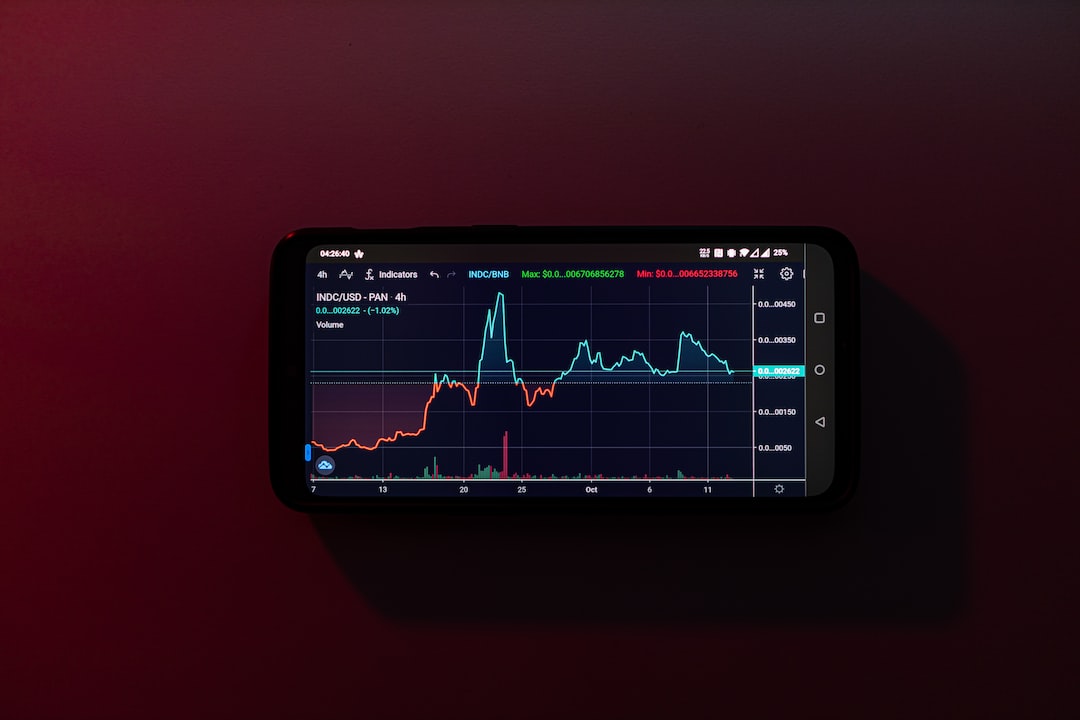Table of Contents
Introduction
Welcome to the world of email marketing, where effective communication meets digital innovation! In today’s mobile-centric era, optimizing your email marketing strategy for mobile devices is not just a nice-to-have, it’s a necessity. With more and more people relying on their smartphones and tablets for checking emails on the go, your emails need to be tailored specifically for the mobile experience.
This article will reveal some powerful mobile optimization hacks that will supercharge your email marketing success. From responsive design techniques to simplified layouts, we’ll explore the best practices that will ensure your emails look stunning and engaging on any mobile device.
To truly understand the impact of mobile optimization, imagine this: a beautifully designed email hits your inbox, but when you open it on your phone, the text is cut off, the images are distorted, and the call-to-action buttons are impossible to click. Frustrating, right? That’s why optimizing your emails for mobile devices is crucial to captivate your audience and drive conversions.
Throughout this article, we’ll provide valuable insights and actionable tips to elevate your email marketing game. Prepare to unlock the potential of mobile optimization and skyrocket your email engagement rates!
| Name |
Mobile Optimization Hack |
| Responsive Design |
Ensuring your email adapts to different screen sizes. |
| Simplified Layouts |
Keeping your email design clean and clutter-free for easy viewing. |
| Clear Call-to-Action |
Using compelling and easily clickable buttons to drive desired actions. |

Step 1: Understanding the mobile landscape
Step 1: Understanding the mobile landscape
In order to optimize your email marketing campaigns for mobile devices, it is crucial to first understand the mobile landscape. Mobile usage has skyrocketed in recent years, with more and more people accessing emails and other content from their smartphones and tablets.
When considering mobile optimization, it is important to take into account factors such as screen sizes, operating systems, and user behavior. Mobile screens are typically smaller than desktop screens, requiring you to prioritize the most important information and make it easily readable. Additionally, different operating systems and email clients may render emails differently, so it is essential to test and optimize your campaigns for various platforms.
Furthermore, understanding user behavior on mobile devices is crucial for effective targeting and personalization. Mobile users tend to have shorter attention spans, so it is important to deliver concise and engaging content that captures their attention quickly.
By thoroughly understanding the mobile landscape, you can better tailor your email marketing campaigns to meet the needs and preferences of mobile users, ultimately improving their effectiveness and driving better results.
Step 2: Mobile-friendly design and layout
Step 2: Mobile-friendly design and layout
One of the key factors in optimizing your email marketing campaigns for mobile devices is ensuring that your emails have a mobile-friendly design and layout. With the majority of emails being opened on mobile devices, it is crucial to create a seamless and engaging experience for mobile users.
Firstly, make sure your emails are responsive, meaning they can adapt to different screen sizes. This ensures that your email is displayed correctly on various mobile devices, from smartphones to tablets.
Secondly, keep it simple and scannable. Mobile users have limited attention spans and are often on the go, so make sure your email content is concise and easy to digest. Use short paragraphs, bullet points, and subheadings to break up the text and make it skimmable.
Lastly, optimize your images and buttons. Large images can slow down loading time, so make sure to compress your images without compromising their quality. Additionally, use larger and more visible buttons to make it easier for mobile users to click on them.
Step 3: Responsive email templates
Step 3: Responsive email templates
One of the key aspects of optimizing your email marketing campaigns for mobile devices is to use responsive email templates. Responsive email templates are designed to adapt and adjust to different screen sizes, ensuring that your emails are displayed properly and are easy to read on any device.
When creating a responsive email template, it is important to consider the following:
1. Layout: Use a single-column layout to ensure that the content flows smoothly and is not cut off on smaller screens.
2. Font size: Choose a font size that is easily readable on mobile devices without zooming in.
3. Call-to-action buttons: Make sure the buttons are large enough to be easily tapped on small screens.
4. Images: Optimize images for faster loading times and make sure they scale properly on different devices.
By using responsive email templates, you can provide a better user experience for your mobile subscribers and increase the effectiveness of your email marketing campaigns.
Step 4: Optimizing subject lines and preheader text
Step 4: Optimizing subject lines and preheader text
When it comes to email marketing campaigns on mobile devices, the subject line and preheader text are crucial elements that can greatly impact the open rates of your emails. Mobile users often have limited screen space, so it’s important to make your subject lines and preheader text concise and compelling.
1. Keep it short and sweet: Mobile screens have limited space, so aim for subject lines that are 30-40 characters long. Be concise and get to the point to grab the attention of mobile users.
2. Make it compelling: Mobile users often skim through their emails, so it’s important to make your subject lines and preheader text engaging. Use action words, create a sense of urgency, or ask a question to pique their interest.
3. Personalize whenever possible: Personalization can help improve open rates, so consider using recipients’ names or location in the subject lines or preheader text to make it more relevant and appealing.
By optimizing your subject lines and preheader text for mobile devices, you can increase the likelihood of your emails being opened and read by your target audience.
Step 5: Clear and concise content
Step 5: Clear and concise content
When optimizing your email marketing campaigns for mobile devices, it is crucial to ensure that your content is clear and concise. Mobile users have limited screen space and attention spans, so it is important to get your message across quickly and effectively.
Start by using short and to-the-point subject lines that grab the reader’s attention. Keep your email body concise and focused, using bullet points or numbered lists to break up information. Use headings and subheadings to make it easier for readers to scan through the content.
It is also important to use a legible font size and style to ensure that your content is easy to read on mobile screens. Avoid using overly small fonts or fancy, hard-to-read fonts. Stick to a clean and simple design that is optimized for mobile viewing.
Finally, make sure that your call-to-action (CTA) buttons are clear and prominently displayed. Use a contrasting color to make them stand out and keep them large enough to be easily tapped with a finger. A clear and concise CTA will increase the chances of engagement and conversion for your mobile audience.
Step 6: Call-to-action buttons and links
Step 6: Call-to-action buttons and links
A crucial aspect of optimizing your email marketing campaigns for mobile devices is to ensure that your call-to-action buttons and links are easily clickable and noticeable. Mobile screens are smaller, so you want to make it as easy as possible for your recipients to take action.
Here are some tips for optimizing call-to-action buttons and links:
1. Size and placement: Make sure your buttons and links are large enough and placed prominently within your email. This will make them easier to tap on touchscreens.
2. Contrasting colors: Use colors that stand out from the background of your email to make your buttons and links more noticeable.
3. Clear and concise text: Use short and compelling text on your call-to-action buttons to clearly convey the desired action.
4. Adequate spacing: Leave enough space around your buttons and links to prevent accidental clicks.
By optimizing your call-to-action buttons and links, you can increase the chances of your recipients engaging with your email and taking the desired action.
Step 7: Testing and measuring performance
Step 7: Testing and measuring performance
After optimizing your email marketing campaigns for mobile devices, it’s important to test and measure their performance to ensure their effectiveness. A/B testing is a common method used to compare two versions of an email and determine which one performs better. It involves dividing your audience into two groups and sending each group a different version of the email. By tracking metrics such as open rates, click-through rates, and conversions, you can identify which version resonates more with your audience.
Additionally, it’s crucial to analyze data from your email marketing platform. Look at metrics like bounce rate, unsubscribe rate, and engagement rate to gauge the overall success of your mobile campaigns. Are recipients interacting with your emails? Are they taking the desired actions?
Use the insights gained from testing and analyzing data to make data-driven decisions. Adjust your email content, design, and targeting strategies accordingly, constantly optimizing and improving your campaigns for better results.
Step 8: Continuous improvement and adaptation
Step 8: Continuous improvement and adaptation
Optimizing your email marketing campaigns for mobile devices is an ongoing process. As technology evolves and consumer behavior changes, it’s important to continuously analyze and adapt your strategies to ensure maximum effectiveness.
Regularly monitor the performance of your mobile campaigns and collect data on key metrics such as open rates, click-through rates, and conversions. Identify trends and patterns to gain insights into what is working and what needs improvement.
Experiment with different elements of your campaigns, such as subject lines, email design, and call-to-action buttons, to see how they impact engagement on mobile devices.
Consider conducting A/B tests to compare the performance of different variations of your emails. This can help you identify the most effective strategies and make data-driven decisions to optimize your campaigns.
Stay updated with industry trends and best practices for mobile email marketing. Subscribe to relevant newsletters, attend webinars, and participate in online communities to learn from industry experts and stay ahead of the curve.
By continuously improving and adapting your email marketing campaigns for mobile devices, you can enhance the user experience, increase engagement, and drive better results for your business.
Conclusion
Conclusion:
In conclusion, optimizing email marketing campaigns for mobile devices is crucial for achieving success in today’s digital landscape. With the increasing use of smartphones and tablets, it is essential to adapt to the mobile environment in order to effectively reach and engage with target audiences.
By understanding the mobile landscape, including screen sizes, operating systems, and user behavior, marketers can tailor their email campaigns to provide a seamless and engaging experience for mobile users. This includes using mobile-friendly design and layout, responsive email templates, and optimizing subject lines and preheader text.
In addition, clear and concise content, along with well-placed call-to-action buttons and links, will enhance the readability and conversion rates of mobile emails. By testing and measuring the performance of campaigns, marketers can continually refine their strategies and adapt to changing trends.
Continuous improvement and adaptation are essential in order to stay ahead of the curve in mobile email marketing. By staying updated on industry trends and best practices, marketers can ensure they are delivering the best possible user experience and driving better results.
In summary, by implementing these mobile optimization hacks, marketers can boost their email marketing success and effectively engage with their mobile audience.
Frequently Asked Questions
1. How do you optimize your email marketing campaigns for mobile devices?
To optimize your email marketing campaigns for mobile devices, you can follow these best practices:
– Use a responsive email design that adapts to different screen sizes.
– Keep your email content concise and easy to read on a small screen.
– Optimize your images and use alt text to ensure they load quickly and can be understood without images turned on.
– Ensure your call-to-action buttons are large and easy to tap.
– Test your emails on different mobile devices and email clients to ensure compatibility.
2. What is a responsive email design?
A responsive email design is an email template that automatically adjusts its layout and formatting based on the device and screen size it is viewed on. It ensures that the email looks and functions correctly on desktop computers, smartphones, and tablets.
3. Why is it important to optimize email campaigns for mobile devices?
Optimizing email campaigns for mobile devices is important because a significant portion of email opens occur on mobile devices. If your emails are not optimized, they may appear broken or difficult to read, leading to lower engagement and conversion rates.
4. How can I make my email content easy to read on a small screen?
To make your email content easy to read on a small screen, you should:
– Use a legible font size (at least 14px).
– Use short paragraphs and bullet points to break up the text.
– Use a single column layout to avoid excessive scrolling.
– Use a hierarchy of headings and subheadings to guide the reader.
– Avoid using too many images or large blocks of text.
5. Can I use the same email template for desktop and mobile?
While you can use the same email template for both desktop and mobile, it is recommended to use a responsive email design that adapts to different screen sizes. This ensures the best user experience and readability on all devices.





